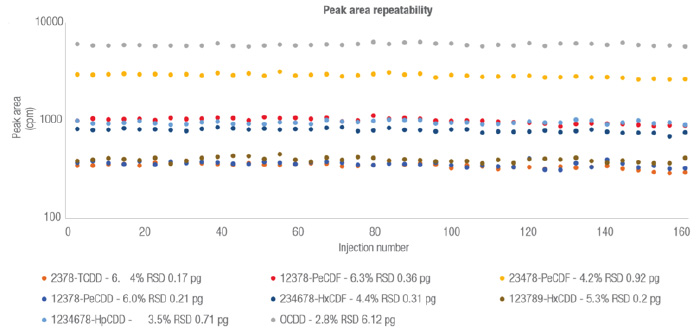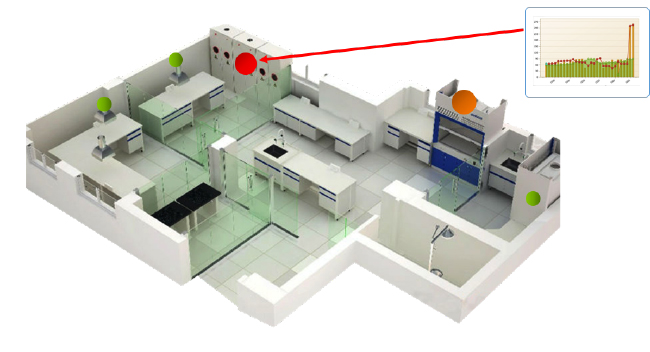Modern food supply chains are inherently complex, with products typically passing through multiple suppliers and distributors, as well as countries and continents, before they end up on the supermarket shelf. While global supply chains offer consumers greater choice and convenience, they also make protecting the security of food products more challenging. With additional stakeholders between farm and fork, products are exposed to an elevated risk of biological or chemical contamination, as well as food counterfeiting and adulteration challenges—potentially putting consumer health and brand reputation in jeopardy.
Given the importance of maintaining the safety, quality and provenance of food products, global regulatory bodies are placing the integrity of supply chains under increased scrutiny. In the United States, for example, the adoption of FSMA moved the focus from responding to foodborne illnesses to preventing them by prioritizing comprehensive food testing measures, enforcing inspections and checks, and enabling authorities to react appropriately to safety issues through fines, recalls or permit suspensions.1 Similarly, China’s revised Food Safety Law (known as FSL 2015) is widely considered to be the strictest in the country’s history, and seeks to drive up quality standards by empowering regulators, and enhancing traceability and accountability through robust record-keeping. 2 The European Union continues to closely regulate and monitor food safety through its General Food Law, which is independently overseen by the European Food Safety Authority from a scientific perspective.
Achieving the Highest Standards of Food Security, Integrity and Traceability
For producers, manufacturers and distributors, the heightened regulatory focus on the security and integrity of the food supply chain has placed additional emphasis on accurate record-keeping, transparent accountability and end-to-end traceability. To meet the needs of the modern regulatory landscape, food chain stakeholders require robust systems and tools to manage their quality control (QC), environmental monitoring and chain of custody data. Despite this, many businesses still handle this information using paper-based approaches or localized spreadsheets, which can compromise operational efficiency and regulatory compliance.
The fundamental flaw of these traditional data management approaches is their reliance on manual data entry and transcription steps, leaving information vulnerable to human error. To ensure the accuracy of data, some companies implement resource-intensive verification or review checks. However, these steps inevitably extend workflows and delay decision-making, ultimately holding up the release of products at a high cost to businesses. Moreover, as paper and spreadsheet-based data management systems must be updated by hand, they often serve merely as a record of past events and are unable to provide insight into ongoing activities. The time lag associated with recording and accessing supply chain information means that vital insight is typically unavailable until the end of a process, and data cannot be used to optimize operations in real-time.
Furthermore, using traditional data management approaches, gathering information in the event of an audit or food safety incident can be extremely challenging. Trawling through paperwork or requesting information contained in spreadsheets saved on local computers is time-consuming and resource-intensive. When it comes to establishing accountability for actions, these systems are often unable to provide a complete audit trail of events.
Digital Solutions Transform Food Security and Compliance
Given the limitations of traditional workflows, food supply chain stakeholders are increasingly seeking more robust data management solutions that will allow them to drive efficiency, while meeting the latest regulatory expectations. For many businesses, laboratory information management systems (LIMS) are proving to be a highly effective solution for collecting, storing and sharing their QC, environmental monitoring and chain of custody data.
One of the most significant advantages of managing data using LIMS is the way in which they bring together people, instruments, workflows and data in a single integrated system. When it comes to managing the receipt of raw materials, for example, LIMS can improve overall workflow visibility, and help to make processes faster and more efficient. By using barcodes, radiofrequency identification (RFID) tags or near-field communication, samples can be tracked by the system throughout various laboratory and storage locations. With LIMS tracking samples at every stage, ingredients and other materials can be automatically released into production as soon as the QC results have been authorized, streamlining processes and eliminating costly delays.
By storing the standard operating procedures (SOPs) used for raw material testing or QC centrally in a LIMS, worklists, protocols and instrument methods can be automatically downloaded directly to equipment. In this way, LIMS are able to eliminate time-consuming data entry steps, reducing the potential for human error and improving data integrity. When integrated with laboratory execution systems (LES), these solutions can even guide operators step-by-step through procedures, ensuring SOPs are executed consistently, and in a regulatory compliant manner. Not only can these integrated solutions improve the reliability and consistency of data by making sure tests are performed in a standardized way across multiple sites and testing teams, they can also boost operational efficiency by simplifying set-up procedures and accelerating the delivery of results. What’s more, because LIMS can provide a detailed audit trail of all user interactions within the system, this centralized approach to data management is a robust way of ensuring full traceability and accountability.
This high level of operational efficiency and usability also extends to the way in which data is processed, analyzed and reported. LIMS platforms can support multi-level parameter review and can rapidly perform calculations and check results against specifications for relevant customers. In this way, LIMS can ensure pathogens, pesticides and veterinary drug residues are within specifications for specific markets. With all data stored centrally, certificates of analysis can be automatically delivered to enterprise resource planning (ERP) software or process information management systems (PIMS) to facilitate rapid decision-making and batch release. Furthermore, the sophisticated data analysis tools built into the most advanced LIMS software enable users to monitor the way in which instruments are used and how they are performing, helping businesses to manage their assets more efficiently. Using predictive algorithms to warn users when principal QC instruments are showing early signs of deterioration, the latest LIMS can help companies take preventative action before small issues turn into much bigger problems. As a result, these powerful tools can help to reduce unplanned maintenance, keep supply chains moving, and better maintain the quality and integrity of goods.
While LIMS are very effective at building more resilient supply chains and preventing food security issues, they also make responding to potential threats much faster, easier and more efficient. With real-time access to QC, environmental monitoring and chain of custody data, food contamination or adulteration issues can be detected early, triggering the prompt isolation of affected batches before they are released. And in the event of a recall or audit, batch traceability in modern LIMS enables the rapid retrieval of relevant results and metadata associated with suspect products through all stages of production. This allows the determination of affected batches and swift action to be taken, which can be instrumental in protecting consumer safety as well as brand value.
Using LIMS to Protect Security and Integrity of the Food Supply Chain
Increasingly, LIMS are helping businesses transform food security by bringing people, instruments and workflows into a single integrated system. By simplifying and automating processes, providing end-to-end visibility across the food supply chain, and protecting the integrity of data at every stage, these robust digital solutions are not only helping food supply chain stakeholders to ensure full compliance with the latest regulations; they are enabling businesses to operate more efficiently, too.
References
- FDA. (2011). FDA Food Safety Modernization Act. Accessed October 3, 2019. Retrieved from https://www.fda.gov/food/food-safety-modernization-act-fsma/full-text-food-safety-modernization-act-fsma.
- Balzano, J. (2015). “Revised Food Safety Law In China Signals Many Changes And Some Surprises”. Forbes. Accessed October 3, 2019. Retrieved from https://www.forbes.com/sites/johnbalzano/2015/05/03/revised-food-safety-law-in-china-signals-many-changes-and-some-surprises/#624b72db6e59.























